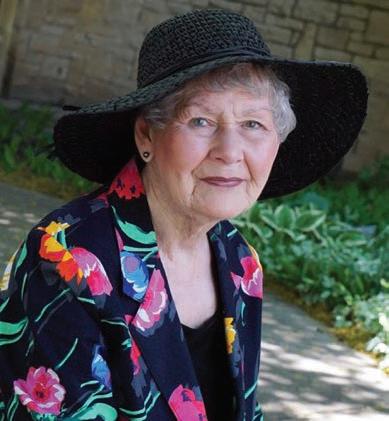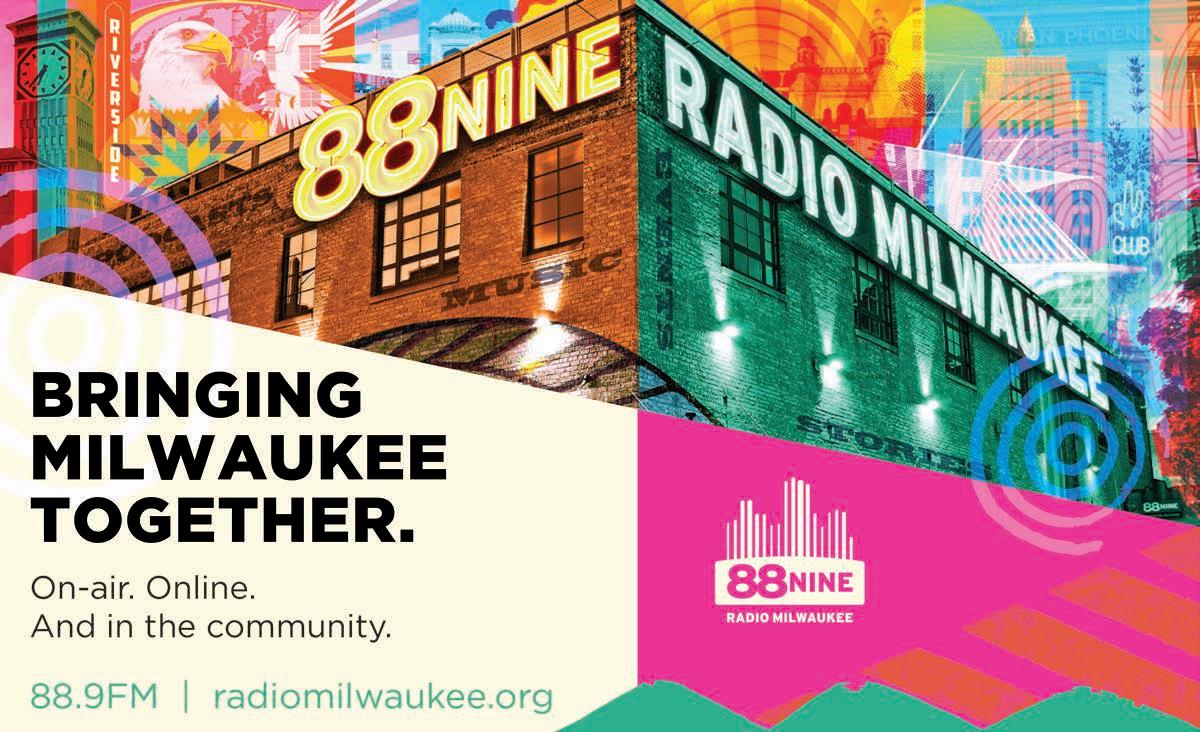
5 minute read
Making Milwaukee Music History
Photo courtesy of Thallis Drake.
Ahandful of individuals have created Milwaukee’s cultural landscape. With a mission to edify and ennoble, they have shared their passion for the arts with the population at large. Among them is Frederick Layton who founded the Layton Art Gallery in 1888, which evolved into the Milwaukee Art Museum. In 1933, John-David Anello established the Florentine Opera. And, 35 years ago, in 1986, Thallis Drake created Early Music Now (EMN), an organization dedicated to presenting world class musicians playing Medieval, Renaissance and Baroque music in historically informed performance, a discipline seeking to produce the music’s original sound and sensitivity as it would have been experienced centuries ago.
HOW DID YOU BECOME CONVERTED TO EARLY MUSIC AND HISTORICAL PERFORMANCE?

I returned to Milwaukee in the late 1960s after receiving a degree in violin from Eastman School of Music and joined the McDowell Club, an organization dedicated to classical music. I met Gertrude Stillman, an organist and harpsichordist and became a member of her early music band, the Medieval Consort. I made a gown to join them. We gave concerts in libraries, women’s clubs and high schools. They wanted a deeper sound, so I decided to get a viola da gamba [the cello’s six-stringed and fretted older cousin]. I found one in Utah of all places and had it shipped to me. With no teacher available, I taught myself to play it. Then I went to a workshop in Chicago and discovered I was doing it all wrong. But I was smitten and fell in love with the instrument. We’d perform a concert at the end of the workshop. I decided we had to have something like this in Milwaukee.
OFF THE CUFF WITH EARLY MUSIC NOW’S THALLIS DRAKE
BY PAUL MASTERSON
AND THAT SOMETHING BECAME EARLY MUSIC NOW?
In the years leading up to EMN, I found my role in presenting. It’s been my joy to present to people all these years. In the 1970s it was bands like Les Jongleurs and The Medieval Consort. At the time of the Artist Series at the Pabst Theater, I suggested an early music series and the idea took off.
In 1986, I raised $500 to launch Early Music Now. Its first concert took place at the Milwaukee Public Library’s Centennial Hall. It featured Chicago’s Newberry Consort. We soon outgrew Centennial Hall and moved to the Humphrey Scottish Rite Masonic Center, then to other venues to accommodate not only the expanding audience numbers but also the demands of the music’s acoustics and ambiance. The best place of all is St. Joseph’s Chapel. That location remains the traditional site for EMN’s December holiday concerts. In fact, this year, for our 35th Anniversary, the Newberry Consort returns to perform a Mexican Christmas themed concert there.
IT SEEMS YOU WERE NOT ONLY PROMOTING THE GENRE BUT ALSO ITS VALUE AS AN INTANGIBLE ASSET FOR THE CITY.
A friend of mine, city librarian Donald Sager, once told me, “Milwaukee was like a library missing a book.” We are a city with a capital “C” and not to have early music was unimaginable. It wasn’t only a matter of sharing a passion, but also one of providing an immersive experience. One event in 1993 centered on the Old English epic Beowulf. We required guests to bring a knife and napkin for a banquet served by costumed high school volunteers.
During our 2019-20 season, Tibetan monks created a sand mandala at City Hall and performed at the Tripoli Shrine Center.
TODAY MILWAUKEE IS RECOGNIZED AS A LEADING CENTER OF EARLY MUSIC IN AMERICA. HOW DID YOU MANAGE TO ACHIEVE THAT?
It’s a matter of intellectual curiosity. We wanted to do something others don’t do or compete with anyone and we’re very frank about what we embrace: Medieval, Renaissance, and early Baroque music. We’ve educated people. We go into the schools and even if it reaches just one or two kids, to enrich one person’s life is success.
We’ve brought in musicians from across the nation and from over a dozen countries representing Western and Eastern Europe as well as India, Japan and Tibet. I think it’s important to embrace all backgrounds. Each one has given something to the other. It opens one’s ears. There is so much to experience to show how music connects us and it’s important to know where it comes from.
The good will we established has earned us a good reputation. People from all over the world are begging to come to Milwaukee as part of our series.
SUCCESS IS ALSO A MATTER OF MANAGEMENT.
I started from scratch. You have to have a dream and then you have to give it away. The first board embraced the dream. After a dozen years, I approached Charles Sullivan to lead the organization. He was our salvation. He built up EMN far more than I ever could. Sullivan stayed on as director for two decades before handing over the reins to his successor, Charles Grosz.
WHAT IS EMN’S LEGACY?
I’m astounded how it’s evolved. There are people who have been coming to our concerts from the very first years. Many are subscribers. They’ve invested in us one way or another. They enjoy our concerts and keep coming back. We’ve never had the same thing twice, from dance concerts to commedia dell’arte. We’ve also contributed greatly to the world of early music. Now you can get a degree in early music performance which was unheard of when I was in college. It’s important the EMN mission be maintained.
AND YOUR PERSONAL LEGACY?
It was my life. Presenting people I admired and loved to Milwaukee was my greatest joy. I had to share it. Many people caught it and understood where I was coming from. It’s a maternal necessity to nurture. I’m like a mother hen. I just cluck “I’m so proud.”
Paul Masterson served on the board of the Milwaukee Gay Arts Center and is a columnist for the Shepherd Express and shepherdexpress.com.











